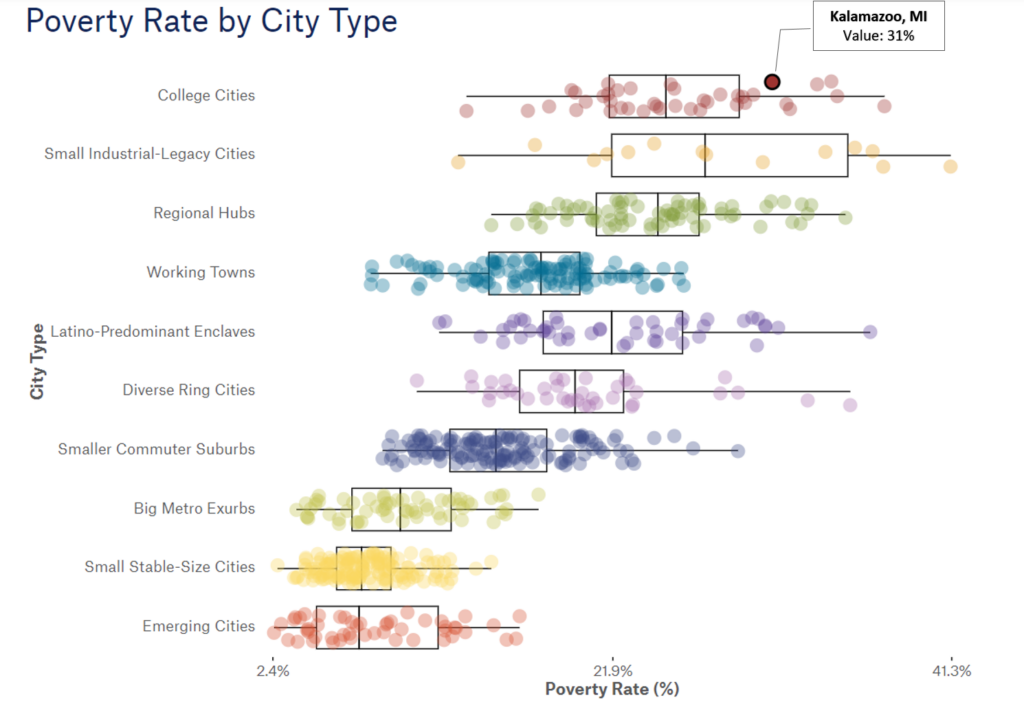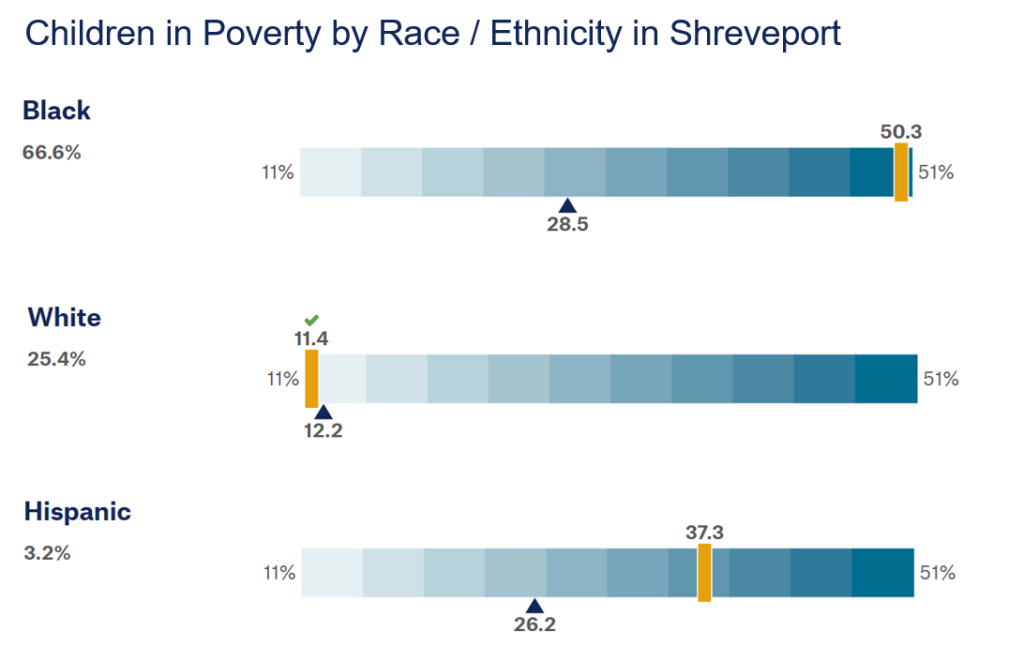Amid Uncertainty, Using Community and City Types to Improve Health and Equity
Inspired in part by the American Communities Project’s county-level health analysis by Community Type, City Health Dashboard recently released an analysis and typology of America’s small and midsize cities, categorizing cities of population between 50,000 to 500,000 into 10 distinct City Types.
Two key issues in the City Types analysis: addressing equity head-on and encouraging peer networks among cities with shared characteristics — findings shared with trends from the Community Types framework of the ACP.
These typologies — or categories of places based on sets of shared characteristics like population changes, demographics, and economic trends — shed new light on place-based patterns often overlooked for regional, state, or population size groupings. What arises from both frameworks are new peer networks and perspectives on what drives health across these places.
Using Community and City Types as a lens to focus on two places — Kalamazoo County and Kalamazoo City in Michigan and Caddo Parish and Shreveport in Louisiana — it’s evident that these findings can be put into practice for communities across the country to improve health and equity at the community and individual levels.
Housing Equity in College Cities
Kalamazoo County and its namesake city fall into analogous Community and City Types: “College Towns” and “College Cities.” College Cities tend to have both higher and more variable poverty rates and housing costs due to the large numbers of students, most of whom are making low incomes, if any, and paying high rents. But these cities also have non-student populations, including professors and researchers, as well as service sector staff, with even wider income and housing disparities.
The City of Kalamazoo, where 53% of renters have excessive housing costs (defined as renters spending more than 30% of income on rent), is in the throes of confronting an unjust history and recognizing the residual effects of redlining and neighborhood segregation on their current housing market. After two years of stakeholder engagement, last month, the city approved bold Fair Housing Ordinances intended to alleviate discrimination based on renters’ past criminal convictions, evictions, limited resources, and other limitations.

Kalamazoo’s new housing protections come amid the Covid-19 pandemic recovery, which is significantly shifting housing dynamics everywhere, but particularly in college towns where student housing is unsteady and much emptier than usual. These cities are seeing falling rents and extended economic downturns after the normal summer slowdowns.
As recently pointed out by Stephen Gavazzi in Forbes, “Prior to the COVID-19 pandemic, those campuses and communities that actively collaborated always fared better than those who did not… Now, campuses and communities more likely will need each other’s help to simply survive.”
The city’s updated housing policies, which are in line with guidance from a new resource from PolicyLink, highlight this interdependence of communities and colleges. Other locales centered around colleges and anchor institutions — from Athens, Georgia, to Walla Walla, Washington — can explore similar housing policies to improve access and reduce costs for all residents.
Health Equity in Southern Regional Hubs
City Health Dashboard’s Regional Hub cities partially align with communities in ACP’s African American South. These places are defined by their large Black populations and high poverty levels, where residents are living daily in the remnants of racism. Many of these cities are rebuilding, not just from the health and economic impacts of Covid-19, but still from the 2008 recession. Shreveport, Louisiana — in Caddo Parish — is one of these communities.
In 2018, almost 39% of Shreveport children were living in poverty, a steady increase from 33% in 2013 and with wide variation among race/ethnicity. While Shreveport is a majority-Black community, when Covid-19 hit, local leaders realized it was still disproportionately impacting Black residents. Using data and lived experience, Shreveport Mayor Adrian Perkins sounded the alarm early, bringing attention to the Coronavirus’s racial disparities — following trends in other health crises like the AIDS epidemic and maternal mortality.

But addressing health injustices requires more than just acknowledging the history of health-care access and racism in the South. Local decision-makers must center racial equity in local policies. City leaders help set the tone by addressing equity head-on, as emphasized by the Divided by Design report from former New Orleans Mayor Mitch Landrieu’s new organization E Pluribus Unum: “In the places where leaders openly embraced the concepts of racial equity and diversity, there is more awareness and openness to the concepts across the community.”
Communities categorized as Regional Hubs and African American South have the potential to make tremendous strides by centering anti-racism and equity in efforts to improve health and its social and economic drivers.
Unlike the African American South counties, the Regional Hubs Type also comprises cities that extend north and west across the U.S., where Black populations grew after the Great Migration in the early to mid-20th century. With City Types, these cities, such as Toledo, Ohio, and Utica, New York, can perhaps now have a new lens through which to view their community structure and health outcomes, and more directly address equity in local policies and health improvement efforts.
This is a challenging, uncertain time for city leaders, tackling the compounding crises of Covid-19, economic collapse, and racial injustices, among others. Centering racial equity and connecting with other peer communities can reveal possible paths forward.
Explore the City Types data and report, as well as the full suite of metrics and tools on the City Health Dashboard.
 Becky Ofrane is Manager of Engagement and Partnerships for the City Health Dashboard housed at NYU School of Medicine’s Department of Population Health. Her work involves connecting with partners and city leaders to get data into the hands of those who can make a difference in health and equity.
Becky Ofrane is Manager of Engagement and Partnerships for the City Health Dashboard housed at NYU School of Medicine’s Department of Population Health. Her work involves connecting with partners and city leaders to get data into the hands of those who can make a difference in health and equity.
